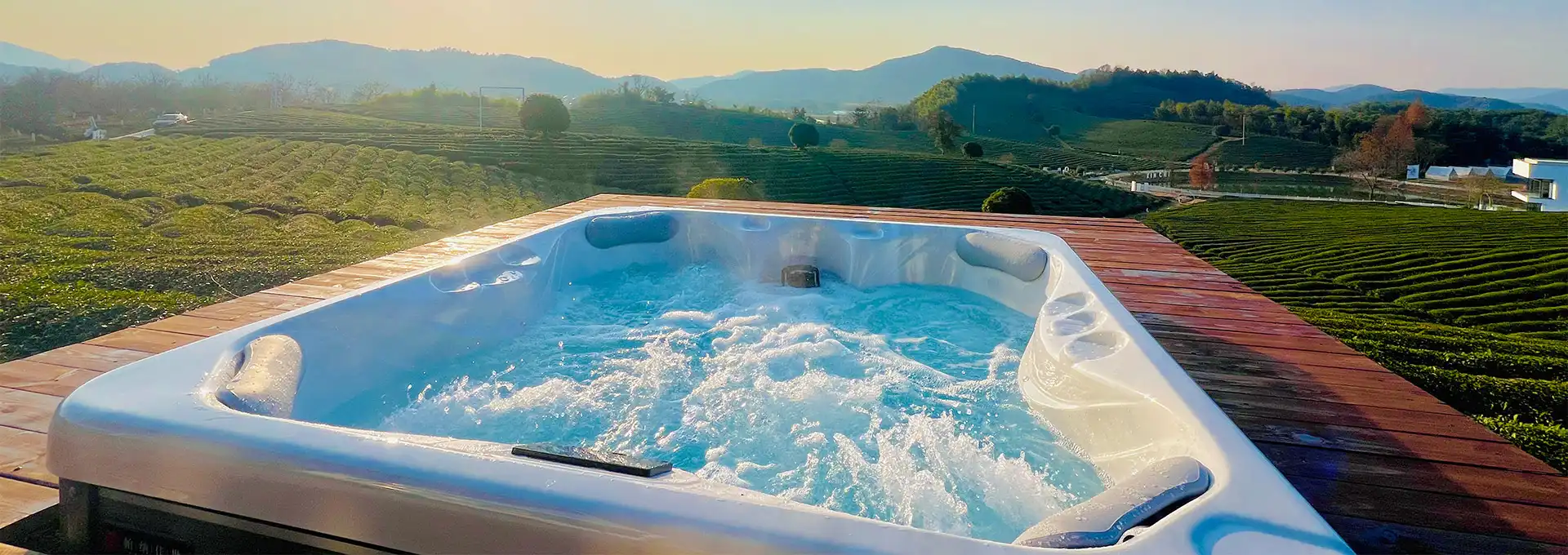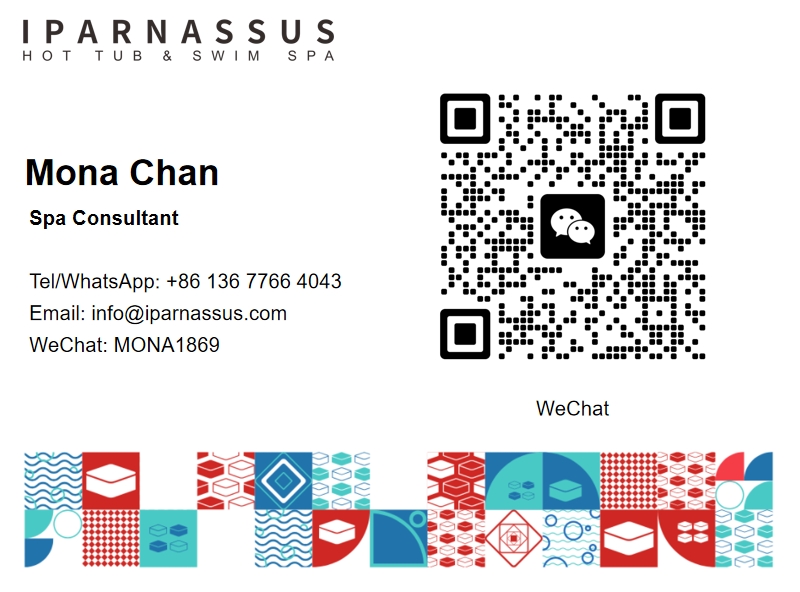Pool And Spa Care: Mastering Water Chemistry Balancing
2025-07-31 15:37:01
Maintaining pristine water quality in pools and spas requires a deep understanding of chemical balance and regular monitoring. Pool And Spa Care encompasses far more than simply adding chlorine to your water; it involves mastering the delicate interplay between pH levels, alkalinity, sanitizer effectiveness, and water clarity. Whether you're managing a backyard swimming pool or a luxurious hot tub, proper water chemistry ensures safe, comfortable, and enjoyable experiences while protecting your investment from costly equipment damage and premature deterioration.
What Are the Essential Chemical Parameters for Pool And Spa Care?
Understanding pH Balance in Water Systems
Proper pH management forms the cornerstone of effective Pool And Spa Care, with optimal levels ranging between 7.2 and 7.6 for most applications. When pH levels drift outside this range, swimmers experience eye irritation, skin discomfort, and reduced sanitizer effectiveness. Low pH conditions create acidic water that corrodes metal components, etches plaster surfaces, and causes rapid chlorine dissipation. Conversely, high pH levels above 7.8 lead to cloudy water, scale formation on equipment, and significantly reduced chlorine potency. Pool And Spa Care professionals recommend testing pH levels twice weekly using reliable test strips or digital meters, making gradual adjustments with pH increaser (sodium carbonate) or pH decreaser (sodium bisulfate) as needed. The relationship between pH and chlorine effectiveness is particularly critical, as chlorine becomes nearly 80% less effective at pH levels above 8.0, making regular monitoring essential for maintaining safe swimming conditions.
Total Alkalinity and Its Impact on Water Stability
Total alkalinity serves as your water's buffer system, preventing rapid pH fluctuations that can destabilize your Pool And Spa Care routine. Ideal alkalinity levels range from 80-120 parts per million (ppm), acting as a shock absorber for pH changes caused by rainfall, swimmer load, and chemical additions. When alkalinity falls below 80 ppm, pH becomes extremely unstable, bouncing erratically with minor chemical additions or environmental factors. Pool And Spa Care becomes significantly more challenging under these conditions, requiring constant pH adjustments and increased chemical consumption. High alkalinity above 150 ppm creates the opposite problem, making pH adjustments difficult and often leading to persistently high pH levels. Sodium bicarbonate effectively raises alkalinity, while muriatic acid carefully lowers both alkalinity and pH simultaneously. Understanding this relationship allows Pool And Spa Care technicians to make strategic adjustments that maintain long-term water stability while minimizing chemical costs and maintenance frequency.
Sanitizer Levels and Water Clarity Management
Effective sanitization represents the most critical aspect of Pool And Spa Care, protecting users from harmful bacteria, viruses, and algae growth. Free chlorine levels should maintain 1-3 ppm in pools and 3-5 ppm in spas, with higher temperatures requiring increased sanitizer concentrations due to accelerated chemical breakdown. Combined chlorine (chloramines) should never exceed 0.5 ppm, as these compounds cause strong chemical odors and eye irritation commonly mistaken for "too much chlorine." Pool And Spa Care protocols include shocking (superchlorination) weekly or after heavy use to eliminate chloramines and organic contaminants that regular sanitizer levels cannot address. Alternative sanitization methods like bromine, salt water systems, or UV sterilization each offer unique advantages but require specialized Pool And Spa Care knowledge for optimal performance. Water clarity depends not only on sanitizer levels but also on proper filtration, circulation, and regular brushing of surfaces to prevent biofilm formation and algae attachment points.
How Often Should You Test and Adjust Pool And Spa Care Chemicals?
Daily Monitoring for Optimal Water Quality
Professional Pool And Spa Care demands consistent daily testing of key chemical parameters, particularly in commercial facilities or heavily used residential installations. Free chlorine and pH testing should occur at minimum once daily, preferably at the same time to establish baseline readings and identify trends before they become problematic. Digital testing equipment provides more accurate results than traditional test strips, though quality strips remain acceptable for residential Pool And Spa Care when replaced regularly and stored properly. Temperature significantly affects chemical activity, with spa water above 100°F consuming sanitizer 2-3 times faster than pool water at 80°F. Pool And Spa Care professionals recommend testing before peak usage periods and again several hours after heavy bather loads to assess chemical demand and make necessary adjustments. Automated chemical controllers can maintain consistent levels between manual tests, but they require regular calibration and should never replace human oversight of Pool And Spa Care operations. Documentation of test results helps identify patterns, predict chemical needs, and troubleshoot recurring water quality issues that might indicate equipment problems or structural concerns.
Weekly Comprehensive Chemical Analysis
Comprehensive weekly testing expands Pool And Spa Care beyond daily basics to include total alkalinity, calcium hardness, cyanuric acid levels, and phosphate testing where applicable. Calcium hardness should maintain 150-300 ppm in most Pool And Spa Care applications, preventing both corrosive conditions that damage equipment and scaling that clogs filters and reduces circulation efficiency. Cyanuric acid (stabilizer) protects chlorine from UV degradation but becomes problematic above 50 ppm, requiring partial water replacement to reduce levels. Pool And Spa Care facilities using stabilized chlorine products must monitor cyanuric acid accumulation, as excessive levels create "chlorine lock" conditions where sanitizer becomes ineffective despite adequate test readings. Phosphate testing helps identify potential algae food sources, particularly important in Pool And Spa Care during warmer months when algae growth accelerates. Weekly testing also includes visual inspection of water clarity, surface conditions, and equipment operation to identify developing problems before they require extensive corrective measures or expensive repairs.
Seasonal Adjustments and Long-term Maintenance
Seasonal changes dramatically impact Pool And Spa Care requirements, with spring opening and fall closing representing critical maintenance periods that set the foundation for year-round water quality. Spring Pool And Spa Care includes comprehensive water testing after winter closure, equipment inspection, and gradual chemical balancing to avoid overwhelming newly cleaned systems. Summer months typically require increased sanitizer levels due to higher temperatures, increased usage, and UV exposure that accelerates chemical breakdown. Pool And Spa Care during peak season may require twice-daily testing and chemical adjustment, particularly during heat waves or periods of heavy rainfall that dilute chemical levels and introduce contaminants. Fall preparation involves gradual reduction of chemical levels while maintaining sanitization through temperature drops and reduced usage. Winter Pool And Spa Care varies significantly by climate, with heated spas requiring continuous monitoring while closed pools need periodic chemical adjustment to prevent equipment damage and facilitate spring reopening. Understanding these seasonal patterns allows Pool And Spa Care professionals to anticipate chemical needs, budget for increased consumption periods, and prevent costly water quality problems through proactive maintenance scheduling.
What Common Problems Occur in Pool And Spa Care Water Chemistry?
Algae Growth and Prevention Strategies
Algae represents one of the most persistent challenges in Pool And Spa Care, with green, yellow, and black varieties each requiring specific treatment approaches. Green algae typically indicates insufficient sanitizer levels or poor circulation, turning water cloudy and creating slippery surfaces that pose safety hazards. Pool And Spa Care protocols for green algae include immediate shock treatment with 10-20 times normal chlorine levels, continuous filtration, and aggressive brushing of all surfaces to break up algae colonies. Yellow algae (mustard algae) proves more resistant to standard sanitizer levels, often requiring specialized algaecides and prolonged treatment periods that can disrupt normal Pool And Spa Care routines for weeks. Black algae forms protective layers that shield inner cells from sanitizer contact, making prevention through consistent Pool And Spa Care far more effective than treatment after establishment. Phosphate removal, proper pH balance, and adequate circulation form the foundation of algae prevention, while regular brushing eliminates the biofilm that provides algae attachment points. Pool And Spa Care professionals emphasize that algae prevention costs significantly less than treatment, both in chemical expenses and lost facility usage time during remediation periods.
Cloudy Water and Filtration Issues
Water clarity problems indicate underlying imbalances in Pool And Spa Care chemistry or mechanical systems, requiring systematic diagnosis to identify root causes. Cloudy water may result from inadequate filtration, improper chemical balance, high total dissolved solids, or insufficient circulation time for pool volume. Pool And Spa Care troubleshooting begins with comprehensive chemical testing, followed by filter inspection and cleaning to restore proper flow rates. Particle size affects filtration effectiveness, with fine particles requiring coagulation through aluminum sulfate or polymer-based clarifiers to achieve capture by sand or cartridge filters. Pool And Spa Care systems with persistent clarity issues often benefit from enhanced filtration methods like diatomaceous earth filters or supplemental UV sterilization. High bather loads introduce oils, lotions, and organic matter that overwhelm standard filtration capacity, requiring increased chemical treatment and more frequent filter cleaning. Pool And Spa Care professionals recognize that water clarity serves as a visual indicator of overall system health, with crystal-clear water typically indicating proper chemical balance, adequate filtration, and effective circulation patterns throughout the pool or spa.
Conclusion
Mastering Pool And Spa Care requires understanding the complex relationships between chemical balance, filtration efficiency, and environmental factors that affect water quality. Success depends on consistent testing, proactive maintenance, and systematic approaches to problem-solving rather than reactive chemical additions. Professional Pool And Spa Care emphasizes prevention through proper chemical balance, adequate circulation, and regular equipment maintenance to ensure safe, comfortable, and cost-effective operation.
Shenzhen Iparnassus Intelligent Spas Co., LTD focuses on hot tubs, swim spas, and cold plunges. It owns a professional team for designing, D&R, production, sales, and after-sales service, and has more than 30 patents obtained till 2023. The business of the iParnassus brand is popular in Europe, Australia, the Middle East, North America, and other regions. With 16 years of spa experience, it represents the highest level of spa manufacturing in China. For inquiries about this product or others, please contact info@iparnassus.com for dedicated service.
References
1. Taylor, K. (2022). Swimming Pool Water Balance and Chemistry: A Comprehensive Guide. Aquatic Publications Press.
2. Morrison, R.L. & Chen, S. (2021). "Water Quality Management in Recreational Aquatic Facilities." Journal of Pool and Spa Maintenance, 15(3), 45-62.
3. Williams, D.A. (2023). Pool and Spa Chemical Balance: Professional Techniques and Best Practices. Water Care Publishing.
4. Anderson, M.K., Thompson, J.R., & Davis, L.P. (2022). "Seasonal Variations in Pool Water Chemistry Management." Aquatic Facility Management Quarterly, 8(2), 78-94.
5. Rodriguez, C.E. (2021). Troubleshooting Common Pool and Spa Water Quality Issues. Professional Pool Publications.
6. Johnson, P.H. & Miller, S.T. (2023). "Advanced Filtration Systems for Enhanced Water Clarity in Pool and Spa Applications." International Water Treatment Review, 29(4), 112-128.



